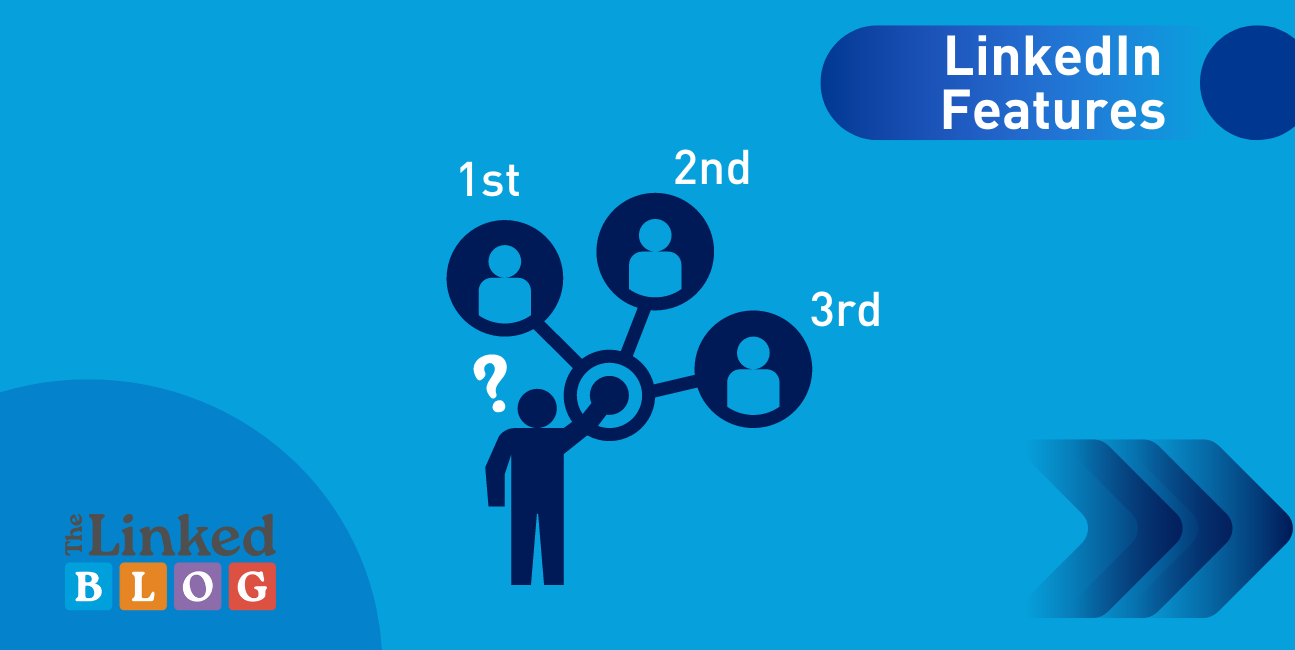
Have you ever wondered what the numbers 1st, 2nd, and 3rd mean next to people’s names on LinkedIn? These numbers represent the levels of connection within the professional network, and they significantly influence how users can interact with each other. Imagine a family tree or a story about the husband of your uncle’s sister. While LinkedIn’s structure isn’t as complicated, it’s important to understand these connection levels in detail.
What Are Connection Levels on LinkedIn?

As you might already know, LinkedIn’s professional network is comprised of connections between 1st-degree, 2nd-degree, and 3rd-degree. The degree of connection you have with another member affects how you can interact with them on LinkedIn. Expanding your network by connecting with more professionals will turn them into direct connections, or 1st-degree contacts, within your network. Understanding these connections is crucial for successfully growing your presence on LinkedIn. Let’s explore each level in detail.
What Are 1st-Degree Connections?

When you see the number 1 next to a person’s name, it means that they are directly connected to you. In other words, one of you has accepted the other’s connection request. As 1st-degree connections, you can freely communicate with each other by sending messages or interacting on LinkedIn.
What Are 2nd-Degree Connections?

Similarly, if you see the number 2 next to a user’s name on LinkedIn, it means they are connected to your 1st-degree connections – a friend of a friend, so to speak. However, unlike with 1st-degree connections, you cannot directly message them or access their detailed information. Still, you can use this opportunity to expand your network by sending them a connection request on LinkedIn.
What Are 3rd-Degree Connections?

By now, you might have guessed what the number 3 next to a LinkedIn user’s name indicates. To clarify, these are individuals connected to your 2nd-degree connections. Similar to 2nd-degree connections, your ability to communicate and interact with 3rd-degree connections is limited. However, understanding this connection level can still help you strategically grow your professional network on LinkedIn.
When should you consider connecting with someone on LinkedIn?
We can’t know everyone, and we shouldn’t. In fact, to have a normal experience on the professional platform, your network should not exceed 30,000 1st-degree connections. However, it’s important to monitor the people who appear in our contact points and interactions on LinkedIn, as they could be:
- prospects;
- potential employers;
- potential professional partners, and so on.

Here are some key scenarios:
- Shared Professional Interests: If someone works in the same industry or shares similar professional interests, connecting could lead to valuable knowledge exchange and collaboration opportunities;
- Networking at Events: After meeting someone at a conference, webinar, or any professional gathering, it’s a good idea to solidify that connection on LinkedIn. This keeps the conversation going and opens the door for future collaborations;
- Mutual Connections: If you notice someone has multiple mutual connections, it might be worth connecting to expand your network within a particular industry or niche;
- Prospective Clients or Partners: For business development, connecting with potential clients or partners is essential. It allows you to build a relationship that can eventually lead to a business opportunity;
- Career Opportunities: Surround yourself with recruiters from companies or industries you are interested in working with. Initiate contact with them to express your interest in potential opportunities and to stay informed about job openings that align with your career aspirations. Regularly engaging with these recruiters can help you be top-of-mind when relevant positions become available.
How to Connect Effectively on LinkedIn?
- Personalize your connection request: Always add a personalized note when sending a connection request. Briefly mention where you met, why you want to connect, or how you can potentially help each other;
- Engage with their content: Interact with your connections by liking, commenting on, or sharing their posts. This helps you stay top-of-mind and reinforces the connection;
- Be selective and strategic: Not every connection is a good one. Be strategic in who you connect with, ensuring they align with your professional goals and values. This ensures your LinkedIn network remains meaningful and valuable.
Understanding the different levels of connections on LinkedIn is crucial because they directly influence your ability to interact with and expand your professional network. By strategically connecting with 1st-degree contacts and leveraging 2nd and 3rd-degree connections, you can broaden your reach and uncover new opportunities. These connections are not just indicators of your network’s size but are key to building relevant relationships and driving your professional growth.
The Linked Blog is here to help you or your brand have the best possible LinkedIn presence, so feel free to contact us if you need help! See more about what we can do for you here.



